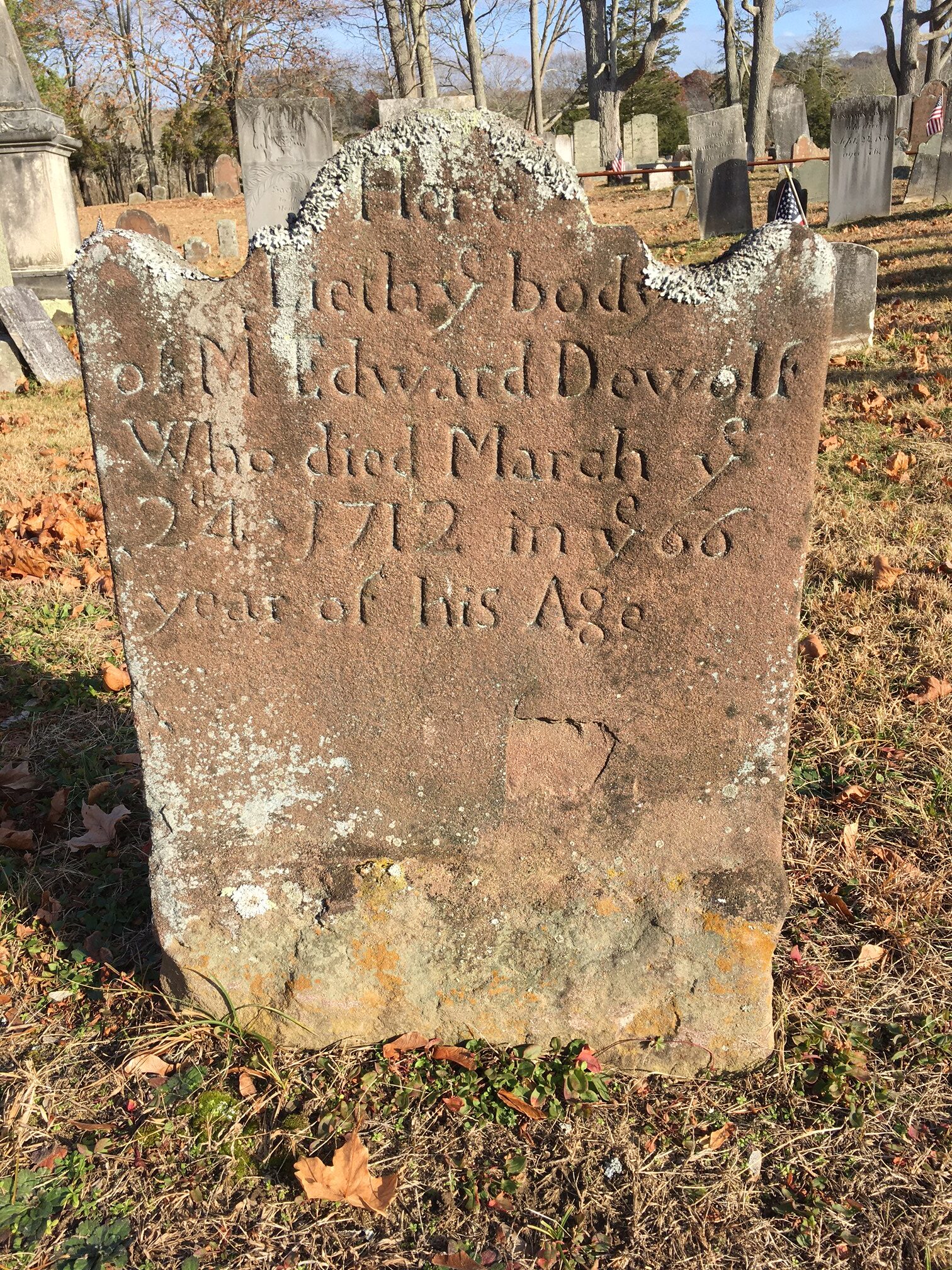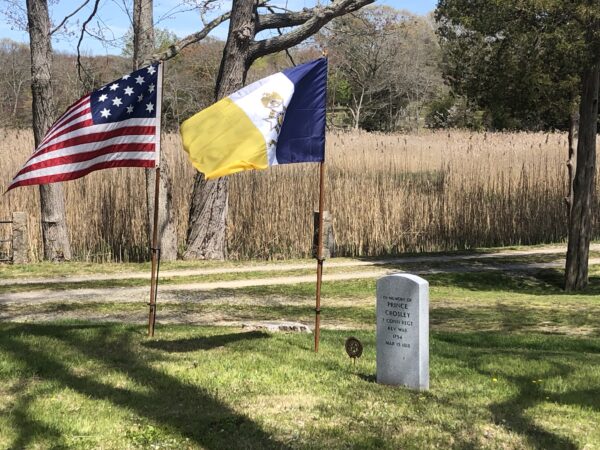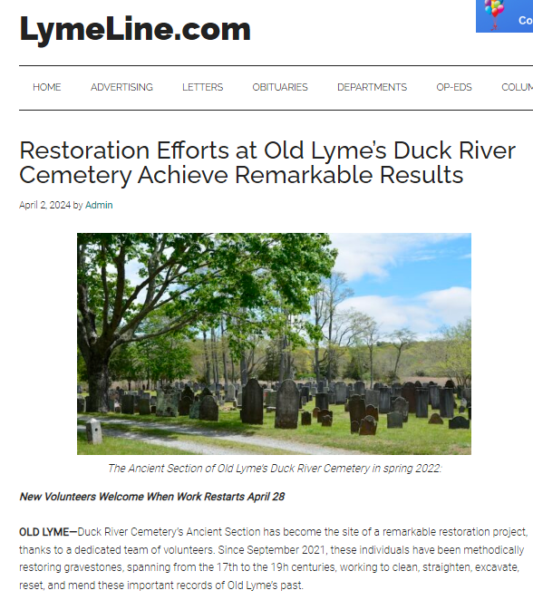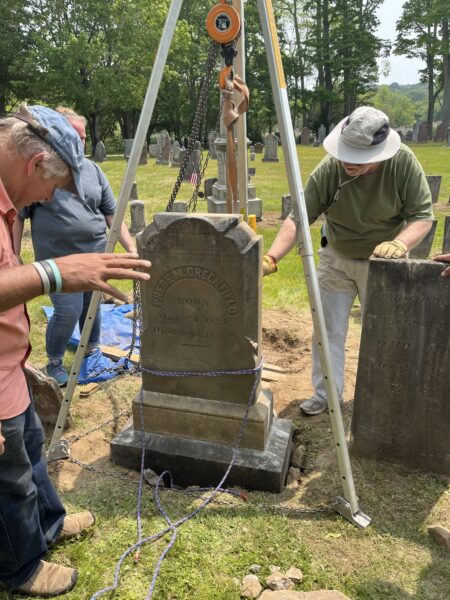STORIES IN STONE
Edward DeWolf
Edward DeWolf (1646-1712) played an important role in Lyme’s early history. He moved from Wethersfield with his father Balthazar DeWolf and other family members to what was then East Saybrook in about 1661. A carpenter and millwright, he built and operated a busy sawmill on today’s Mill Brook, a corn mill nearby, and another sawmill on the Eight Mile River. He served in the local militia and, like other early colonists, including the town’s minister Rev. Moses Noyes, fought in King Philip’s War.
A skilled carpenter, DeWolf rebuilt in 1676 the 10-year-old Duck River bridge to accommodate horses, and in 1685 he agreed to provide shingles for the town’s second meetinghouse. With an enslaved African-descended laborer named Mingo, said to be “industrious in his master’s business,” he exported large quantities of barrel staves, essential for the rum and molasses trade, to the West Indies.
Perhaps because of his access to imported rum, DeWolf was chosen as Lyme’s tavern keeper in 1697 and authorized to “keep a house of entertainment upon the Road.” A town’s tavern keeper was licensed to sell “strong drinks.” New London County Court records show that among those DeWolf entertained in 1700 and 1701 were a wayward husband, an unaccompanied woman, and four deckhands from an ice-bound ship.
In November 1700 the court found a mariner from Southampton named Josiah Raynor, who had acquired property in Lyme, guilty of “lascivious carriage,” or wanton sexual conduct, while staying at DeWolf’s house. DeWolf’s daughter Mary testified that she had seen Raynor with an apparently unaccompanied woman named Sarah Kelly “together apon the bead rapt up in the coverlet.” A month after Josiah Raynor’s dalliance in the tavern, his wife Sarah gave birth in Lyme to their daughter Elishabe.
Lyme residents prospered from the West Indies trade, and a town meeting in 1686 approved construction of a warehouse to “supply the town with salt and Barbados goods.” When Thomas Anderson (1672-1746) served as tavern keeper in 1702, the town gave him “liberty to sell about one hundred gallons of rume: out of Jares by the gallon or quart.” Anderson’s gravestone has not been found, but his wife Hannah Peck Anderson and their 6-year-old daughter are buried not far from Edward DeWolf.
— Carolyn Wakeman

Gravestones in Duck River Cemetery have stories to tell about the lives of those who passed before us in the Lyme region and the events that shaped the development of a Connecticut town, distinguished by its prominent lawyers and ministers, its shipbuilding and maritime trade, its architecture and scenic landscape, and its contributions to education, conservation, and the arts.




